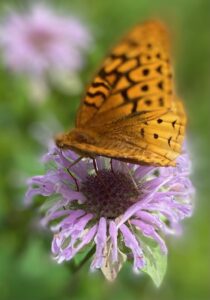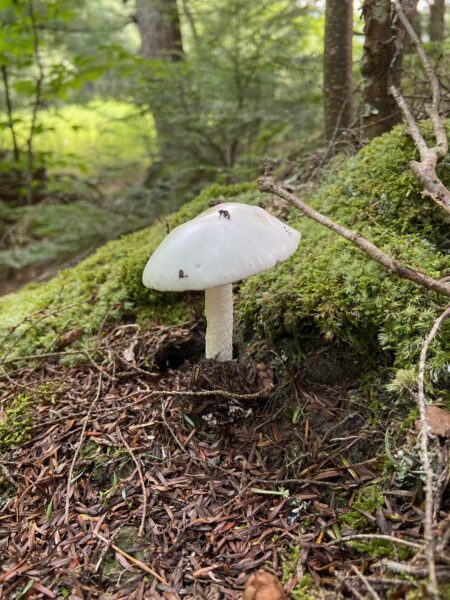Summer is ending but we did take time to explore its joys recently. Gioia is just back from her family place in New York State which was full of ferns, streams, waterfalls, and splashing trout, and gave her lots of wonderful creative inspiration to last her through the year to come.
Benefits of Spending Time in Nature
We know that spending time in nature can reduce stress, lower cortisol, improve mood, and even strengthen the immune system. But sometimes it’s challenging to carve out time to really dive into noticing the natural world around us.

Mindfully Noticing Nature
We often think we have to go to the beach or the mountains to find nature, but when we put out intentional awareness and look deeply around us, nature is right here. The wood frame on the table, the houseplant’s leaf shape, the food we eat, the clouds in the sky, all are ways we can connect to nature right where we are.
Finding Secret Spots in Nature
Where do you go to find nature near you? Perhaps there’s a local park or nature hike you particularly enjoy. We suggest next time you go, use your phone camera to become more aware of what you’re experiencing by taking some cool images of what you’re seeing.

Try the Portrait Mode
Try the “portrait mode” of your camera to get a depth of field that helps bring out unique details. Or try a “worm’s eye view.” An unusual angle can make a photograph have a unique sense of place. Perhaps you’ll find the movement of walking in wild spaces also helps your physical fitness as you develop a deeper connection with the world.
Use Wide-Scope Meditation*
You can also experiment with wide-scope, also called wide sense, meditation (see below for a more thorough description) to see all the shapes and colors, to feel all the textures around you, to smell the aromas of the soil, earth, sand, or waterways, or to notice what you can hear in the soundscape around you. Are there bird calls, wind rustling or other noises that help you connect to being alive in this space and time?
We hope these suggestions help you connect (or reconnect) to the natural world as we move into fall!
Warmly Gioia and Rebecca
Wide Sense Meditation
Wide sense meditation, also known as open awareness or open monitoring meditation, is a practice where you remain open and aware of whatever is happening in the present moment, without focusing on a single object, sensation, or thought. Instead of concentrating on the breath, a mantra, or any specific focus point, you allow your attention to naturally flow between different experiences, whether they are thoughts, feelings, sounds, or bodily sensations.
Key aspects of wide sense meditation include:
1. Non-Judgmental Awareness: Observe your thoughts, emotions, and sensations as they arise, without getting caught up in them or labeling them as good or bad.
2. Broad Focus: Instead of narrowing attention, the practice involves an open, broad awareness that encompasses everything happening in the moment. This could include external stimuli (like sounds or sights) and internal experiences (like thoughts or emotions).
3. Acceptance: Whatever arises in the mind or environment is accepted as part of the present experience, without trying to change or control it.
4. Letting Go: Don’t cling to or follow any particular thought or sensation. When something new arises, shift your attention to it without resistance.
Wide sense meditation is often contrasted with focused attention meditation, where the attention is deliberately kept on a single point of focus. Both practices are valuable, but wide sense meditation is particularly effective for developing a sense of openness, presence, and non-reactivity in daily life.
